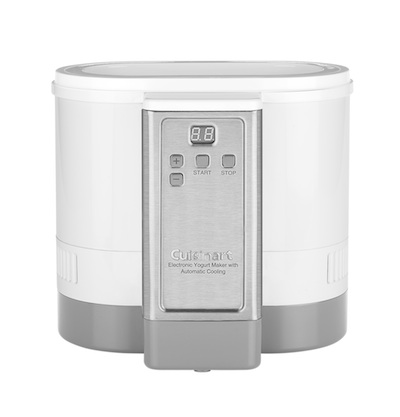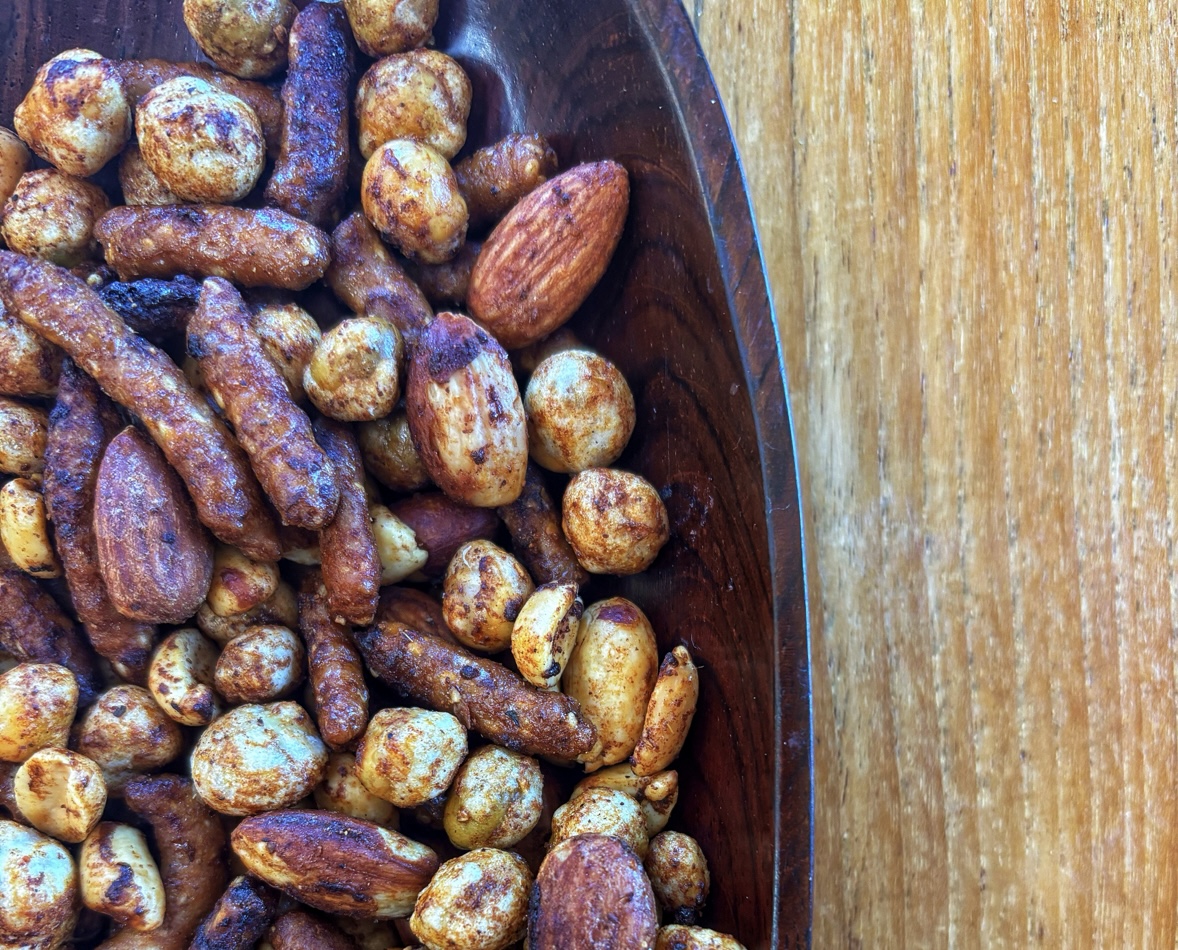
I have a DIY list – one that includes all those things I’d like to find the time to make myself, rather than purchase. My list includes everything from knit sweaters and scrapbooks of my kids’ baby days, to natural home cleansers and shampoos.
When it comes to DIY in my kitchen, we’ve been pretty good at checking things off the list. We make bread, have dabbled in making homemade Oreo cookies, pop tarts, and marshmallows, and gobbled up the granola while it’s still warm.
I’ve seen many foods come and go off the DIY list, while one – making yogurt – continued to remain on that list. Then recently, I was given the opportunity to try out the Cuisinart Electronic Yogurt Maker (CYM-100), and am happy to say that yogurt has transitioned from my To Do DIY list, to my official Completed DIY list.
We are a yogurt loving family. Our favorites include Whole Foods’ 365 brand (our fave is vanilla), Wallaby Organic Yogurt (oh, the raspberry) or Straus Family Creamery (organic maple!!!). When we want to indulge in something a bit creamier, we chose FAGE (classic honey!). We never opt for Yoplait or Dannon, as they aren’t on the shelves where we shop, and even if they were, I’d be wary of the ingredients found within. Lots of ingredients that include things like modified corn starch, high fructose corn syrup, natural flavor, and . . . . sugar — lots of it.
The average yogurt can contain between 10-12 grams of sugar per serving. And, when you take into account that every four grams of sugar added to a food equates to 1 tsp of sugar, things can really add up.
That’s why I am enjoying making my own yogurt. Three simple ingredients (to make the plain variety), which includes whole milk, dry milk, and yogurt culture. Once the plain yogurt is made, I take to adding a bit of flavor. Our first choice was the sweet and tangy taste of blueberries – sweetened with a bit of honey, vanilla and orange zest. How simple is that?
 The Cuisinart (CYM-100) Yogurt Maker couldn’t be any more simple to use. Add the ingredients, choose the fermentation time, and wait . . . because if you are looking for yogurt this afternoon, you’ll have to wait, as it will take a good day to make the yogurt from start to finish.
The Cuisinart (CYM-100) Yogurt Maker couldn’t be any more simple to use. Add the ingredients, choose the fermentation time, and wait . . . because if you are looking for yogurt this afternoon, you’ll have to wait, as it will take a good day to make the yogurt from start to finish.
That’s because making yogurt is a science, and most of that science happens within the machine — which is why you won’t need a degree in food science to figure it all out. You will, however, need to become become acquainted with the culture you will use, as that will affect the final results.
It is also helpful to come to terms with the fact that you will probably fail at one time or another. Our first batch just didn’t ferment properly, leaving me with a liquidy mess after 12 hours in the fermenting stage. But, I think I attributed it to not waiting until the milk had cooled to the proper temperature, a mistake I remedied with my second batch, which was successful.
When our first batch was completed, the kids gobbled it up in school lunches, as an afternoon snack, and in homemade granola for breakfast. We soon followed up with strawberry, and took requests for our next. (the kids suggested honey, orange, or pomegranate).
Wondering what to do with all the yogurt you’ll be making?
Plain yogurt is the perfect ingredient for making a variety of foods. Here are a few recipes to remind you that yogurt is a versatile ingredient in a lot of recipes.
Yogurt Marinated Chicken Thighs
Quinoa Croquettes with Cilantro Yogurt Sauce


